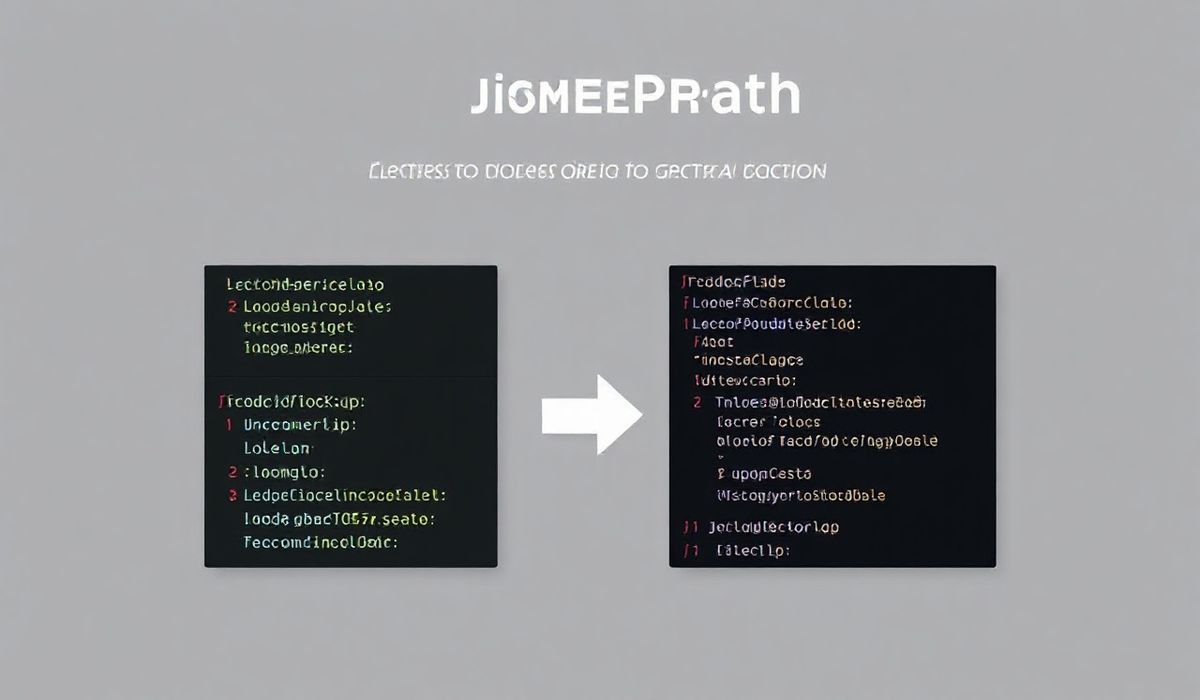Introduction to JMESPath
JMESPath is a powerful query language for JSON, designed to filter, transform, and extract data effortlessly. Whether you’re working with APIs, JSON files, or dynamic data, JMESPath helps you parse and retrieve the specific information you need. Its clear syntax and versatile features make it a go-to tool for developers, data scientists, and analysts.
Why Use JMESPath?
JMESPath stands out due to its simplicity and effectiveness in querying JSON. Some of the key benefits include:
- Ease of Use: Intuitive syntax for quick learning.
- Versatility: Works seamlessly with JSON data in various environments.
- Powerful querying capabilities: Supports filtering, slicing, and manipulation of complex JSON data.
Popular JMESPath APIs with Code Examples
Below are some of the most useful JMESPath queries with real-world examples:
1. Selecting a Key’s Value
Retrieve the value of a key from a JSON object.
JSON: {"name": "John", "age": 25}
Query: name
Result: "John"
2. Accessing Nested Objects
Dive into nested objects with dot notation.
JSON: {"person": {"name": "John", "age": 25}}
Query: person.name
Result: "John"
3. Filtering an Array
Filter an array of objects based on specific criteria.
JSON:
[
{"name": "John", "age": 25},
{"name": "Jane", "age": 30}
]
Query: [].[name]
Result: ["John", "Jane"]
4. Slicing Arrays
Retrieve specific slices or ranges from a JSON array.
JSON: ["apple", "banana", "cherry", "date"] Query: [:2] Result: ["apple", "banana"]
5. Applying Functions
Use built-in functions to manipulate data. For example, `contains` checks if a value exists.
JSON: ["apple", "banana", "cherry"] Query: contains(@, "banana") Result: true
6. Combining Filters
Combine multiple filters for advanced querying.
JSON:
[
{"name": "John", "age": 25},
{"name": "Jane", "age": 30},
{"name": "Doe", "age": 20}
]
Query: [?age > `20`].name
Result: ["John", "Jane"]
Simple App Example Using JMESPath
Let’s build a basic Python app using the jmespath library to query JSON data dynamically.
# Install the `jmespath` library
# pip install jmespath
import jmespath
import json
# Sample JSON data
data = '''
[
{"name": "John", "age": 25, "skills": ["Python", "Java"]},
{"name": "Jane", "age": 30, "skills": ["JavaScript", "HTML"]}
]
'''
parsed_data = json.loads(data)
# Dynamic search query
query = "[?age > `25`].{Name: name, Skillset: skills}"
result = jmespath.search(query, parsed_data)
print(result)
# Output: [{'Name': 'Jane', 'Skillset': ['JavaScript', 'HTML']}]
This app demonstrates the versatility of JMESPath in filtering and transforming JSON data based on real-time user queries.
Conclusion
JMESPath bridges the gap between complex JSON and actionable data insights. From basic value retrieval to advanced filtering, it empowers users to make data exploration efficient and enjoyable. Start leveraging JMESPath in your projects to experience the difference firsthand!




